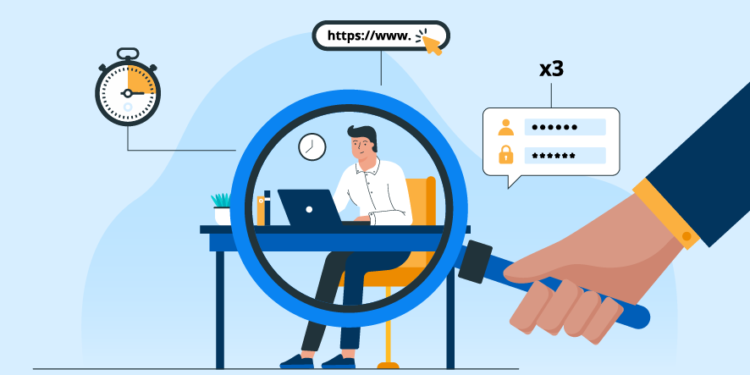Remote work practices and flexible hours have become the norm in today’s digital age. Therefore, employers are increasingly implementing employee monitoring practices to ensure productivity and maintain security.

However, balancing monitoring and respecting employees’ privacy and autonomy is crucial. This article explores the best practices of employee monitoring. It will emphasize the importance of trust in fostering a productive and efficient workplace.
What is employee monitoring?
Employee monitoring is the practice of tracking employees’ activities online and offline. The objective is to ensure compliance with company policies, safeguard sensitive information, and maintain productivity levels.
Monitoring methods can range from simple time-tracking systems to advanced software that captures keystrokes and monitors email communications. While the primary objective is to enhance productivity and protect company assets, it is essential to implement monitoring practices ethically and responsibly.
Best practices for employee monitoring
Here are some tips on effective employee monitoring:
- Clearly define monitoring policies
Employers should establish comprehensive policies that outline the purpose and extent of employee monitoring. These policies should be communicated transparently to all employees. Clarifying what activities will get monitored, the data usage, and the measures taken to protect privacy should have enough clarification from employers. Open communication helps create an atmosphere of trust and ensures employees understand the reasons behind monitoring initiatives.
- Obtain informed consent
Obtaining informed consent from employees is crucial before implementing legal employee monitoring software. The consent should be voluntary and based on clearly understanding the monitoring methods and their implications. Employers should emphasize that monitoring is not for invading privacy but to protect company assets and ensure a productive work environment.
- Use proportional monitoring
Monitoring should be proportional to the risks and needs of the organization. Adopting intrusive monitoring measures without justified reasons can harm employee morale and create an atmosphere of distrust. It is essential to balance monitoring productivity and respecting employees’ privacy. The Electronic Communication Privacy Act of 1986 (ECPA) prohibits interception of telephone lines but doesn’t restrict monitoring electronic communications.
- Maintain data privacy and security
Any data collected through employee monitoring should get handled securely and confidentially. Implement robust data encryption protocols, restrict access to authorized personnel only, and ensure compliance with relevant data protection laws, like HIPAA guidelines. Regular audits and reviews of monitoring practices help identify vulnerabilities and ensure data privacy gets maintained at all times.
Importance of trusting employees to deliver work
While employee monitoring can provide valuable insights and promote accountability, trust remains the foundation of a successful workplace. Trusting employees to deliver quality work and meet deadlines creates a positive work culture that fosters productivity.
Micromanaging employees through excessive monitoring can stifle creativity and erode morale. It will ultimately hinder performance. Empowering employees and allowing them the autonomy to manage their tasks enable employers to cultivate ownership and responsibility. It leads to higher job satisfaction and improved outcomes.
Bottom line
Employee monitoring is a practice that needs an approach with caution and consideration. Implementing best practices help employers strike the right balance between monitoring productivity and respecting employees’ privacy.
However, fostering an environment of trust is equally important, where employees are empowered to deliver their best work. A harmonious blend of monitoring and trust will ultimately promote efficiency and employee satisfaction in the modern workplace.







